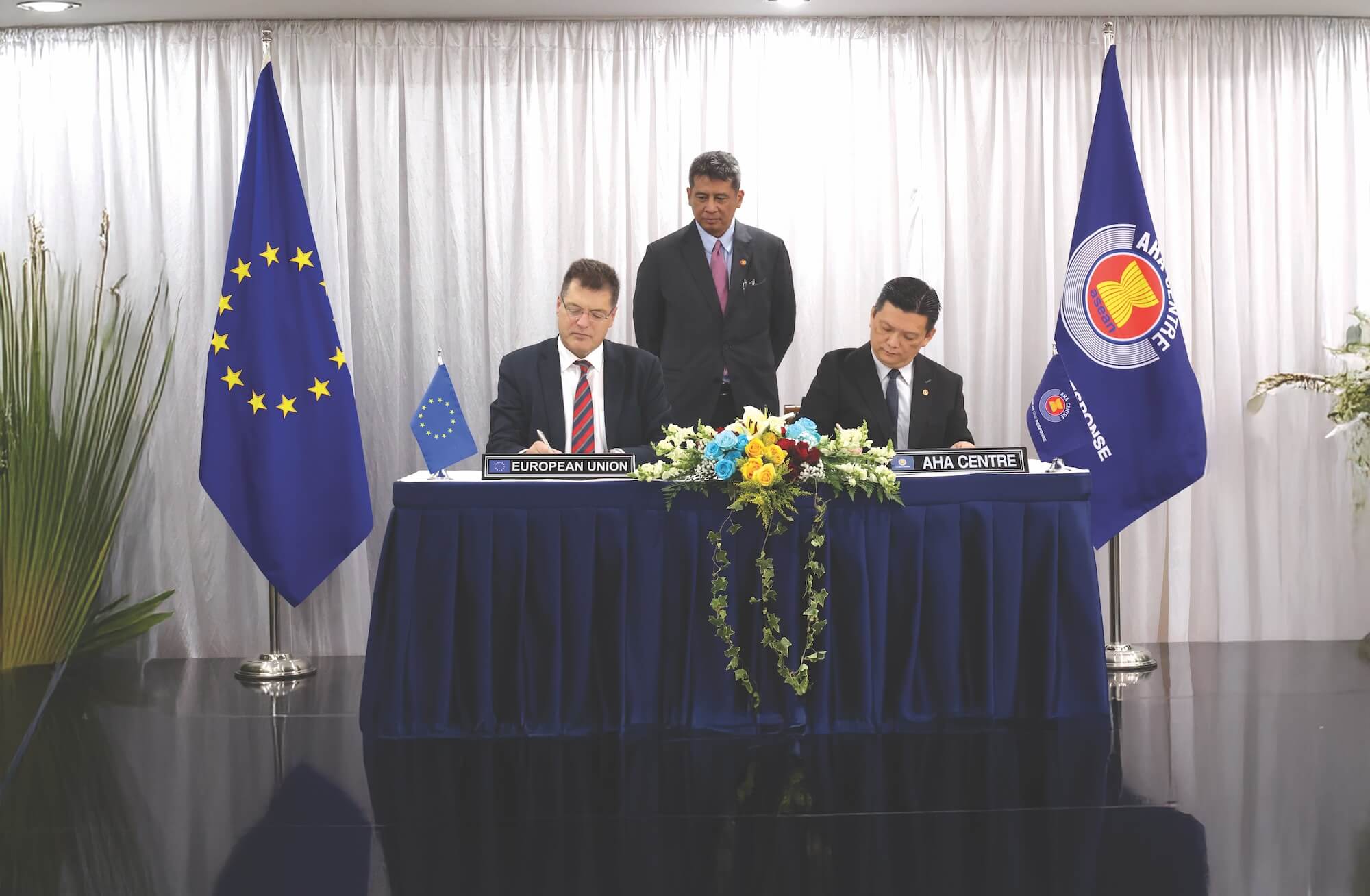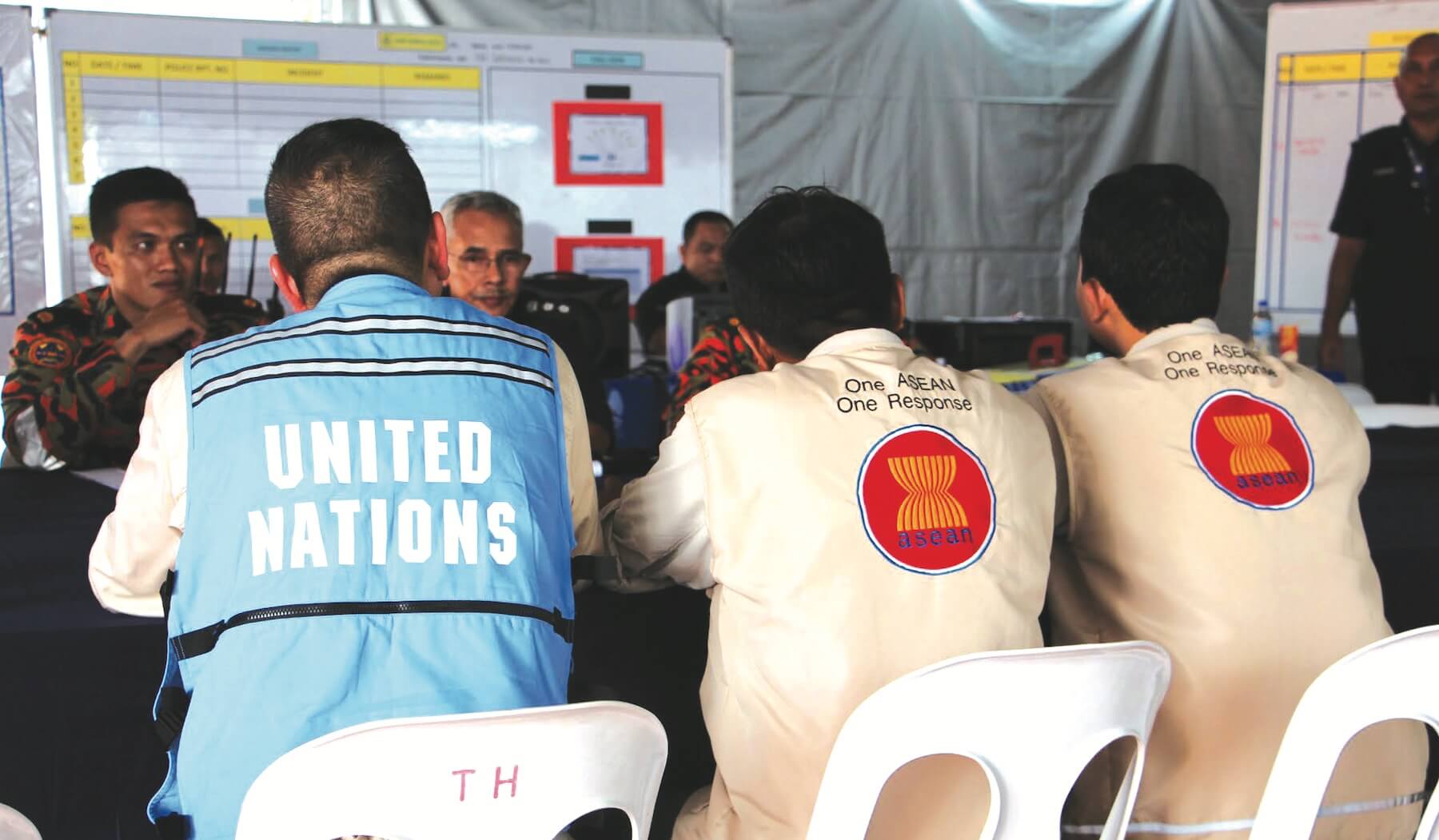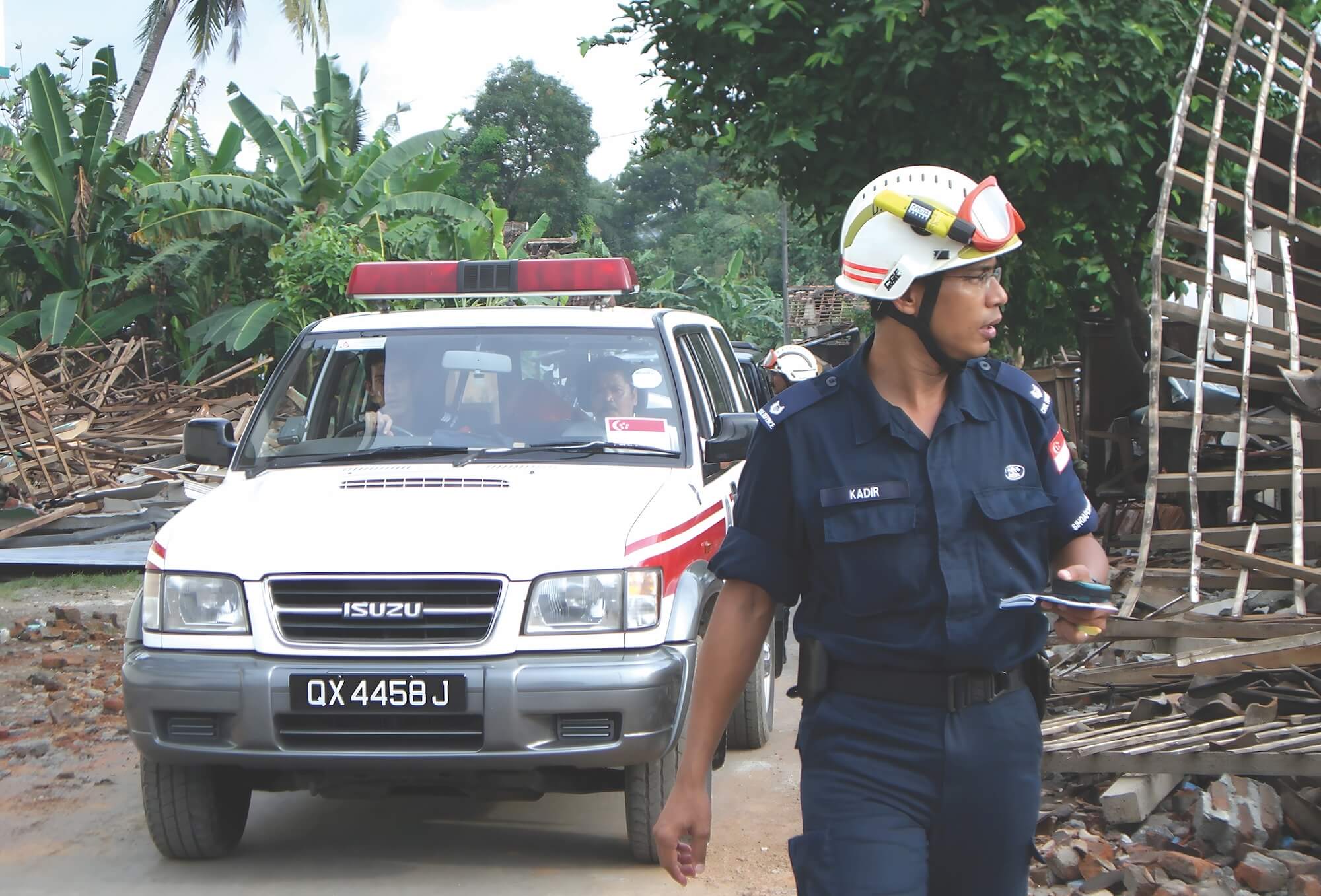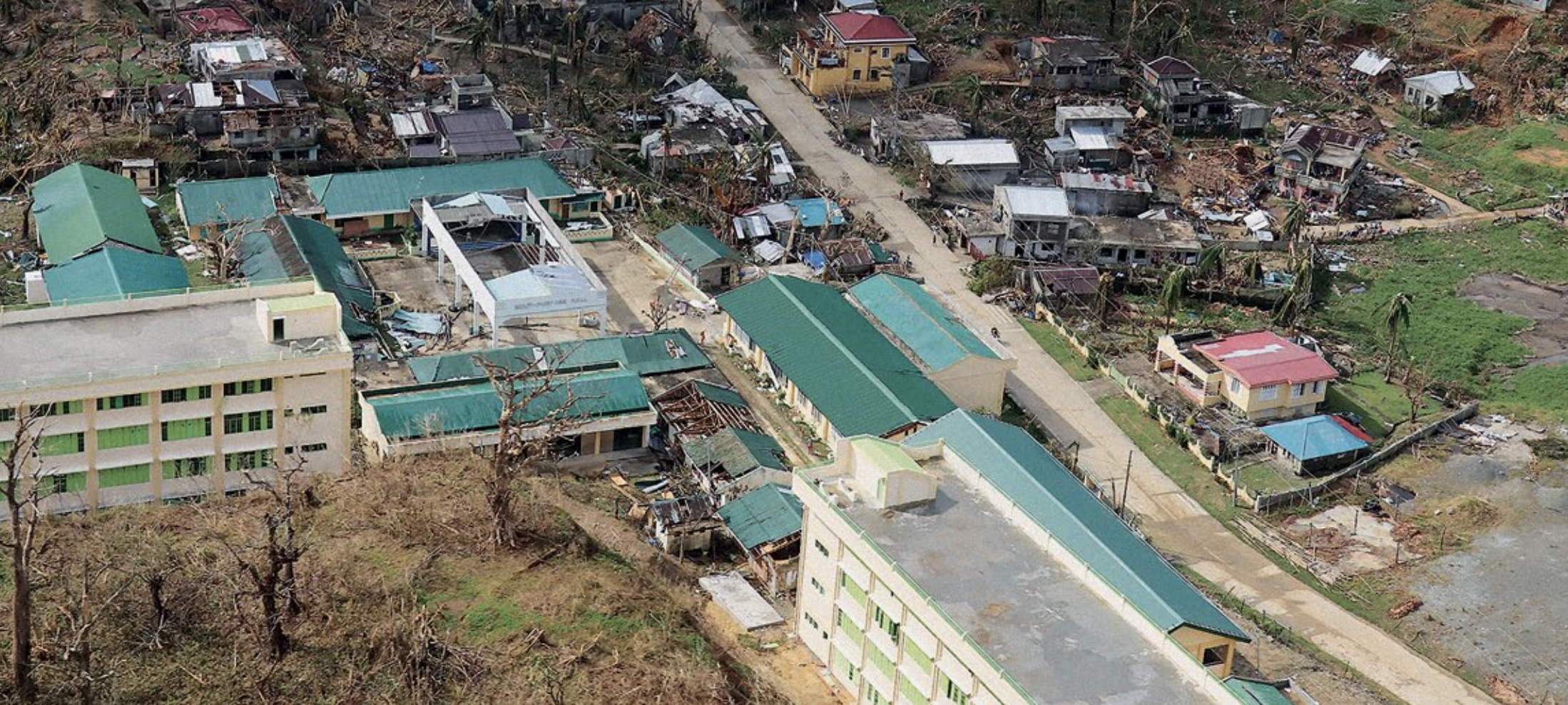



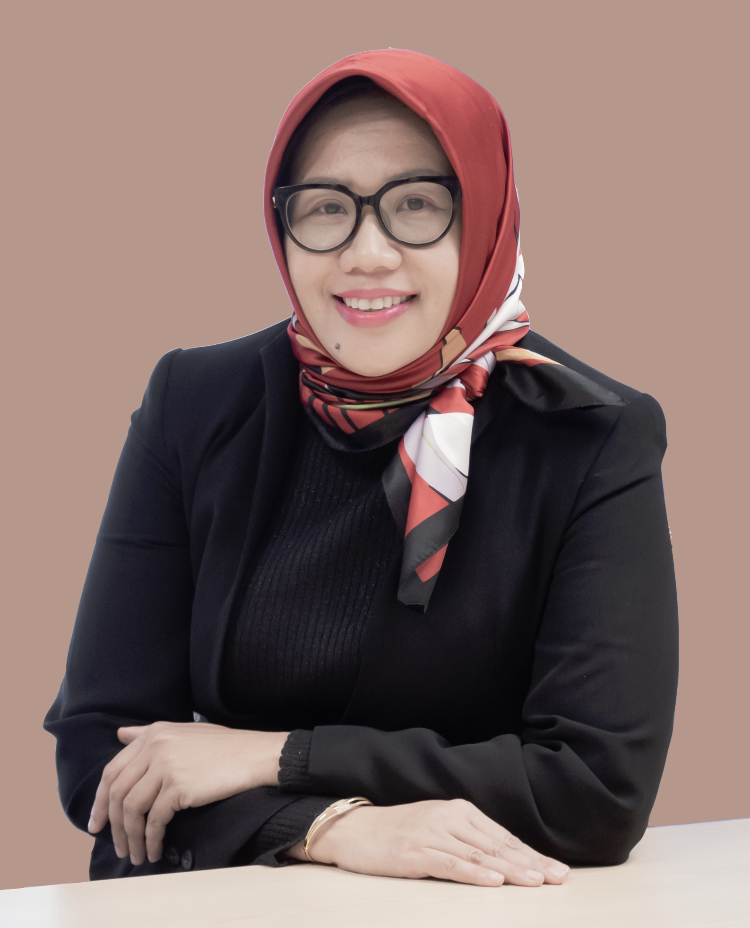

Southeast Asia is one of the world’s most disasterprone regions in the world. From 2012 to 2018,1,218 disasters occurred in the region, causing an estimated yearly damage of 15.9 billion US dollars, three times ASEAN’s collective annual GDP.
These disasters led to almost 30,000 deaths and affected more than 190 million people in the past decade. The magnitude of losses in lives and economies must be reduced.
The ASEAN Agreement on Disaster Management and Emergency Response and the ASEAN Vision 2025 on Disaster Management
To meet the challenge, ASEAN has developed several frameworks and mechanisms to manage and reduce disaster risks and strengthen cooperation among its Member States. This framework aims to strengthen ASEAN’s collective efforts in reducing disaster risk and enhance ASEAN’s coordinated response in emergencies. The most significant is the ASEAN Agreement on Disaster Management and Emergency Response (AADMER), adopted in 2009. AADMER is a legally binding agreement that serves as the legal backbone for the ASEAN disaster management sector. The agreement is implemented through the AADMER work programme which runs on a five-year cycle. The next iteration of the work programme, AADMER Work Programme 2021-2025, is expected to be adopted this year and will lay out the ASEAN disaster management sector’s strategic priorities over the next five years.
The ASEAN Vision 2025 on Disaster Management outlines the strategic direction of the ASEAN disaster management sector. The vision of the ASEAN Ministers in charge of disaster management is to realise ASEAN as a global leader in disaster management by 2025. Towards this end, the ASEAN disaster management sector is coherent in its priorities and activities committed under the AWP’s aegis to meet this regional agenda.
In September 2016, the ASEAN Leaders signed the ASEAN Declaration on One ASEAN, One Response to increase the speed, the scale, and the solidarity of ASEAN’s response. The declaration was inspired mostly from the lessons and experiences gained from ASEAN’s response to Typhoon Haiyan in 2013 in the Philippines. One ASEAN, One Response is an open and inclusive platform which utilises ASEAN’s disaster response coordination principles, framework, and mechanisms, to respond to disasters in the region and outside the region as one. The ASEAN Coordinating Centre for Humanitarian Assistance on disaster management (AHA Centre) supports the operationalisation of the One ASEAN, One Response approach.
AADMER Implementation Arrangements
The ASEAN Committee on Disaster Management (ACDM) is the leading coordinating body and the main driver in implementing the AADMER work programme. The ACDM is guided by a common vision of “A region of disasterresilient nations, mutually assisting and complementing one another, sharing a common bond in minimising adverse effects of disasters in pursuit of safer communities and sustainable development.” In this regard, the ACDM focal points, comprising of the heads of the respective ASEAN Member States’ national disaster management offices, provide strategic guidance in the regular review, monitoring, and evaluation of the implementation of the strategic components of the AADMER work programme. The AHA Centre serves as the operational engine to the AADMER and is also tasked to support the ASEAN Declaration’s operationalisation of One ASEAN, One Response. Under the ACDM, subsidiary thematic working groups have been organised to lead the technical implementation of the AADMER work programme based on the respective priority programmes.
The ACDM has made significant progress by developing disaster management tools and capacities, conducting simulation exercise, and disaster relief operations. To name a few, the ASEAN Joint Disaster Response Plan (AJDRP), the ASEAN Standard Operating Procedure for Regional Standby Arrangements and Coordination of Joint Disaster Relief and Emergency Response Operations (SASOP), and the ASEAN-Emergency Response and Assessment Team (ASEAN-ERAT) are among the notable achievements. With support from the ASEAN dialogue partners and other partners’ organisations, various guidelines, policy dialogues, research studies, and capacity building activities have also been implemented.
To strengthen its cooperation with various range of partners, the ACDM established different platforms including the AADMER Partnership Conference, the ASEAN-United Nations Joint Strategic Plan of Action on Disaster Management (ASEAN-UN JSPADM), the ASEAN-International Federation of Red Cross and Red Crescent Societies (IFRC) Coalition on Resilience, and ASEAN-International Committee of the Red Cross (ICRC) Joint Platform. To engage civil society organisations, ASEAN established the AADMER Partnership Group and also ACDM-Civil Society Organisations partnership frameworks. To improve multi-sectoral coordination and synergies among ASEAN-related mechanisms, the Joint Task Force to Promote Synergy with Other Relevant ASEAN Bodies on Humanitarian Assistance and Disaster Relief (JTF on HADR) is convened regularly.
The AADMER Work Programme 2021- 2025: Integrated and Proactive Disaster Risk Reduction and Management
The AADMER Work Programme 2021-2025 sets the strategic and practical direction for ASEAN to support the realisation of the ASEAN vision of more inclusive and resilient communities. Through mutual assistance and complementarity with the global frameworks, the new work programme emphasises multi-hazards, localisation, innovation, synergy and social inclusion in all stages of disaster management. It also focuses on disaster risk assessment and monitoring, mainstreaming disaster risk reduction into climate change adaptation, advancing disaster-responsive social protection, and resilient infrastructure. It strengthens the existing ASEAN response mechanisms of standby arrangements, enhances preparedness of logistics and information management systems for large scale disasters, and fortifies institutional frameworks for more effective recovery. The AADMER Work Programme 2021-2025 will support continuous innovation through knowledge management, which will eventually support ASEAN’s goal to become a global leader in disaster management by 2025.
ASEAN as the Global Leader in Disaster Management
ASEAN has also developed coherent, coordinated, and strengthened emergency response, increased provisions of disaster risk assessment and early warning systems, and built the capacity of the Member States. The AHA Centre has significantly strengthened and ensured coherence and coordination in disaster response. Moving forward, ASEAN will work towards better integration of disaster risk reduction, climate change adaptation, and future shocks such as pandemics and multihazards considerations. The goals are to increase investments for resilience in disaster prevention and mitigation and ensure to “build back better” in recovery and reconstruction. ASEAN will ensure coherence between its work programme in the next five years, with the Sendai Framework for Disaster Risk Reduction, Paris Agreement on Climate Change, New Urban Agenda, and the Sustainable Development Goals. ASEAN wishes to share its vast experiences within and beyond the region while continuing to build trust and capacity in disaster management. We believe that all of these will pave the way forward to realise ASEAN as the global leader in disaster management.




